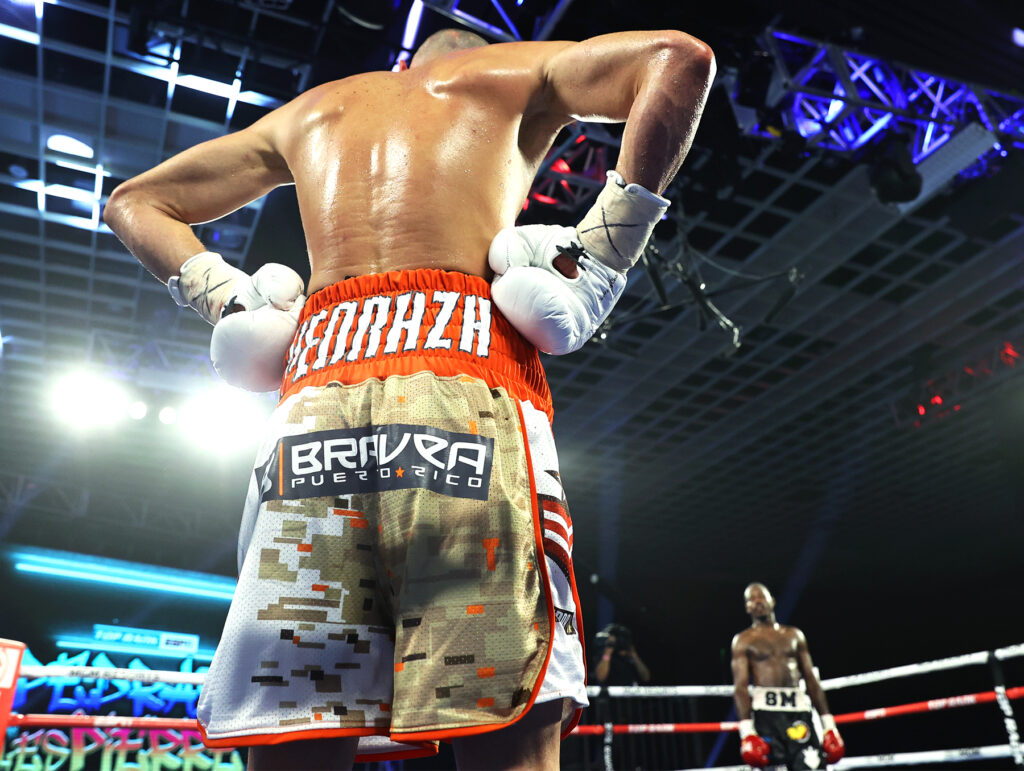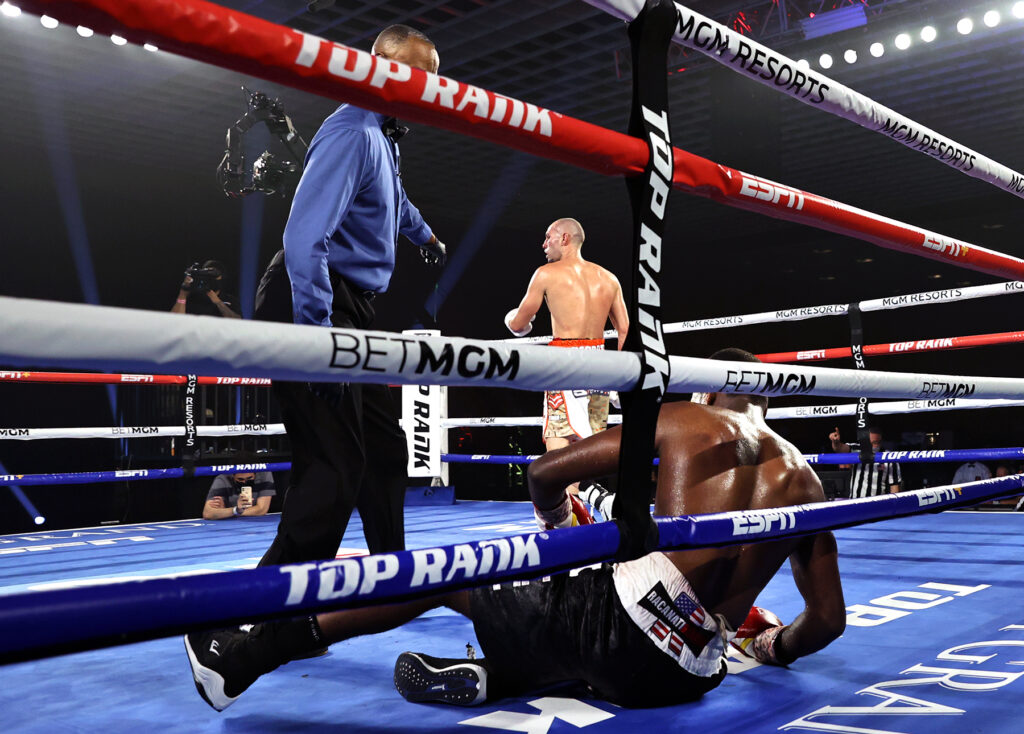With the WBC contemplating further rule changes, IBHOF inductee Graham Houston weighs up the pros and cons of instant replay, and reflects on past revisions of boxing’s laws.
Things change, but not always for the better. A newsletter from WBC President Mauricio Sulaiman headed ‘Resistance to Change’ got me thinking about this.
Boxing has seen many changes over the years.
Championship fights have been reduced from 15 to 12 rounds.
A boxer can no longer be saved by the bell if a knockdown is suffered in the closing seconds of a contest.
Weigh-ins now take place the day before a bout instead of at midday on the day of a fight.
If a boxer loses his gumshield during a round, the mouthpiece is replaced, usually during a lull in the action.
We have technical decisions for instances when a boxer is cut from a clash of heads.
In the old days, if a boxer was cut from what was ruled an accidental clash of heads, and the referee or doctor decided the bout should be stopped, it was an automatic TKO loss.
Even if the cut boxer was way in front on points, if he was cut from a head clash, and the fight was stopped, he lost (as happened, for instance, in the first of the three fights between Young McCormack and Eddie Avoth for the British light-heavy title, when Avoth seemed to be well on his way to winning only to suffer a fight-stopping slice over the eye).
Now we have the instant-replay rule, which has yet to be universally adopted.
At first, it was difficult not to hail this as a good idea. We have the technology, so why not use it?
Instant replay, as I understood it, was to clear up possible areas of dispute but without delaying the fight. Thus, the referee or commission officials would consult with the ringside replay official (a referee watching on a TV monitor) at the end of a round to decide if a cut resulted from a head clash or a punch. Or, say, was a boxer legitimately knocked down or was it a slip?
Unfortunately, instant replay has its downside, as we saw in the recent junior welterweight bout between Jose Pedraza and the southpaw Mikkel LesPierre.
To recap what happened, Pedraza went down from a left to the body in the fifth round and was given the eight count. He seemed to have lost his balance more than anything. Later in the round, Pedraza dropped LesPierre heavily. LesPierre got up and survived till the bell, but he looked unsteady as he retreated.

Then came the rather extraordinary turn of events. When the bell went to start round six, referee Kenny Bayless exited the ring to confer with the replay official and the ringside commissioners. He wanted confirmation on whether he was correct in giving Pedraza the mandatory eight count.
Replays showed that, while LesPierre had indeed landed a left to the body, Pedraza had actually tripped over the southpaw’s right foot. After consulting the replay, it was decided that LesPierre’s knockdown should be disallowed.
Not only was there the conference between the referee and officials, but Bayless went to both corners to advise them that LesPierre was not going to be given credit for a knockdown.
All told, it was about two minutes and 12 seconds between the referee calling time out and signalling for the bout to resume. Factor in the one minute rest period between rounds, and LesPierre got more than three minutes to recover after having been dropped and then going into survival mode.

Was Pedraza deprived of the opportunity to score a stoppage in the sixth round? We will never know. Certainly, the break in the action didn’t best please Pedraza. The Puerto Rican boxer banged his gloves together in a gesture of frustration.
Ex-champ Andre Ward, doing commentary from TV in his home, didn’t like what he was seeing. Ward could understand it if there was a consultation during the minute’s rest, with maybe a little bit of extra time carrying over into the next round. He was okay with that. “But why are they stopping the action?” Ward asked. “This could change the whole flow of the fight.
“To allow the rest period the full minute to run its course and then to stop the action — I just don’t like that part.”
I’ve got to agree with Ward here. LesPierre was able to gather himself and last the distance, although he was down again in the 10th and indeed very close to being stopped in the last round. All credit to LesPierre for gamely making it to the final bell but he got a break with the two-minute-plus time out.
Sure, the instant-replay rule is still in its infancy. But it clearly needs to be modified. We can’t have a situation where a bout is delayed for more than three minutes (if you include the minute’s rest period) while the referee and officials have a discussion about the correct ruling on a contentious incident.
What of the other rule changes?
Traditionalists lament the passing of 15-round title bouts but as Mickey Duff remarked when the change came into effect: “Twelve rounds is enough.”
The WBC introduced the 12-round limit for title bouts as a safety measure but sadly we have had fatalities and serious brain trauma in 12-round title fights. Boxing is never going to be completely safe unless it becomes something far different to what it is today.
The technical-decision rule was brought in for reasons of fairness. It just isn’t fair for a boxer to be winning a fight and then be deprived of what looks like certain victory due to a clash of heads. But we’ve seen the rule abused when a boxer, seemingly booked for defeat, tells the doctor he has blurry vision. Even if a cut doesn’t look too bad, it takes a brave doctor to advise the referee that a contest should be allowed to continue if one of the boxers complains that his vision is affected.
The mouthpiece rule was, of course, introduced for safety reasons. It is easier for a fighter to suffer a lip laceration or even a broken jaw if boxing without a mouth protector. In the old days, if a boxer’s gum shield fell from his mouth — or if a punch knocked it flying — well, it was just too bad.
Sometimes (and I saw this happen in the UK) a referee would kick the fallen mouthpiece across the canvas to the boxer’s corner, to be inserted for the next round. Unhygienic, you might say, but that’s just the way it was.
So, while an additional safety measure is to be applauded, the mouthpiece rule is routinely abused. A boxer under pressure might choose to let his mouthpiece drop to the canvas to buy time (as well as interrupting his opponent’s onslaught).
And what about day-before weigh-ins? Have these really made boxing any safer? We get boxers paring down to unnaturally low weights so that, after food and liquid intake, they can be the bigger, stronger man in the ring on fight night. How many times have we seen boxers miss weight since the day-before weigh-in was introduced? And accidents still happen.
Still, of all the rule changes over the years, the day-before weigh-in is the only one to which I would categorically give the thumbs down. But we’re stuck with it. There will be no going back.
And instant replay? In principle it is a good idea — just as long as we don’t get a repetition of last week’s three-minute delay while a bout is in progress.